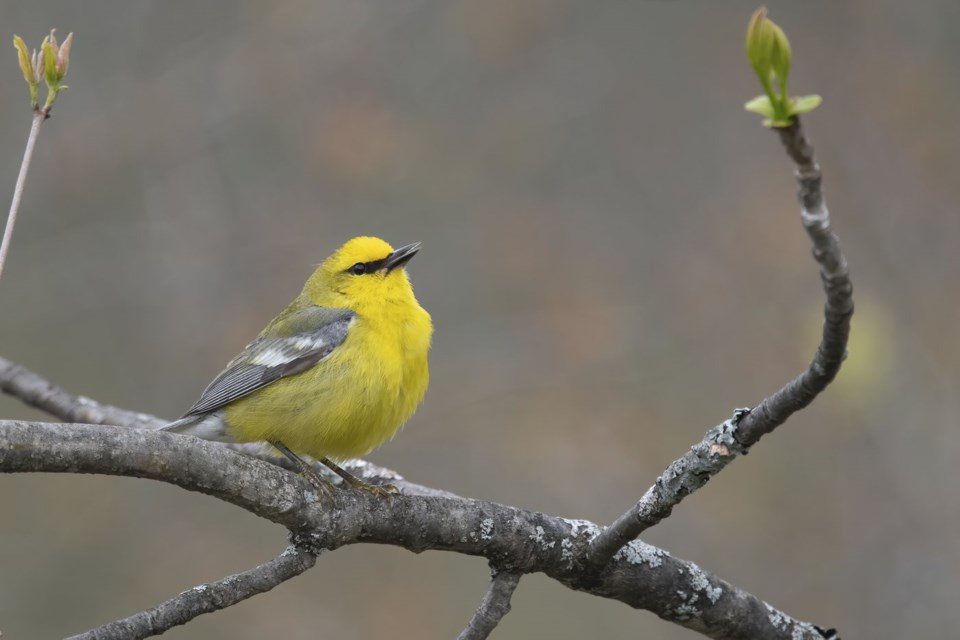In the garden, the start of the growing season means the return of dirt under our fingernails, the scent of freshly spread mulch and the first blooming roses. In my neighborhood, and perhaps yours, it also means an audible onslaught of lawnmowers, leaf blowers and other tools of the landscaper’s trade.
From 8 a.m. through at least early afternoon — five or six days every week — the hum of power tools and other machines disrupts my peace. But even more concerning is that my peace pales in importance to that of my property’s other residents.
Birds, squirrels, rabbits, frogs, insects and other wildlife are critically affected by human-made noise. They’re outdoors right in the middle of what must seem to them a war zone — with no escape. And the battleground noises that surround them aren’t merely nuisances; they disrupt the basic instincts the animals’ lives depend on.
Instincts such as those that alert them to the presence of predators become masked under the gas-powered cacophony prevalent throughout most of suburbia.
The unnatural sounds can also force birds, bats and insects into changing their feeding, nesting and mating habits, says Kevin Munroe, Long Island Preserve Director for The Nature Conservancy, based in Cold Spring Harbor, New York.
“Quite a few animals communicate primarily through song, and their songs are how they find each other,” Munroe said. Those with soft and quiet songs, like warblers, small species of owls, bats and some species of crickets, for instance, can be so badly drowned out by noise pollution that “they literally cannot build families or reproduce,” he said.
To illustrate the point, Munroe likens the animals’ songs to navigation systems.
“Imagine these songs are the birds’ roadmaps to each other, and imagine you’re using your GPS to get somewhere and all of a sudden it turns off, and that’s the only way you can find your family. Now, with it turned off, there’s no way you’ll find your family. That’s what song is like for these animals,” he said.
Artificial noises from power equipment, traffic, construction and industrial sources, can also cause stress and hearing loss in animals. A University of Georgia study even found that highway noises can elevate heart rates in monarch caterpillars.
Thoughtful planning can reduce the noise
This may seem like a losing battle in modern society, but there are steps we can take to help.
The Nature Conservancy recommends changes to industrial practices that include accounting for sensitive areas when siting noise-producing facilities, such as access roads and compressor stations, and designing them to include sound barriers such as walls, vegetative screening and noise-absorbing equipment.
Altering the timing and duration of noisy activities during breeding and hibernation periods could also reduce adverse effects on wildlife, the organization said.
What you can do at home
On our own properties, small changes can make a big impact. Because birds do their “most important talking to each other” between dawn and 9 a.m., Munroe recommends shifting noisy yardwork later. Another critical time for many species of wildlife is after dark, he said.
“You can play music and have fun, but try not to make any loud noises,” he said.
In addition, creating sound buffers by planting dense native trees, evergreens or deciduous shrubs, and switching from gas- to battery-powered tools, including leaf blowers, string trimmers and chainsaws, are simple things homeowners can do to avoid causing harm.
Educating and introducing change to local communities is important, too. Munroe suggests working with your homeowners association, schools, businesses and churches to limit loud, destructive activity on their properties.
“Talk to local municipalities about their noise ordinances and (encourage them to) create a sound sanctuary in the neighborhood (to protect) wood thrushes, katydids” and other wildlife, he said.
And always observe noise ordinances at home and in public places, like parks.
Wild animals serve as “pollinators, affect pest control and have a positive effect on our agriculture and our economy,” Munroe said. “We want them in our neighborhoods.”
___
Jessica Damiano writes weekly gardening columns for the AP and publishes the award-winning Weekly Dirt Newsletter. You can sign up here for weekly gardening tips and advice.
___
For more AP gardening stories, go to https://apnews.com/hub/gardening.
Jessica Damiano, The Associated Press



